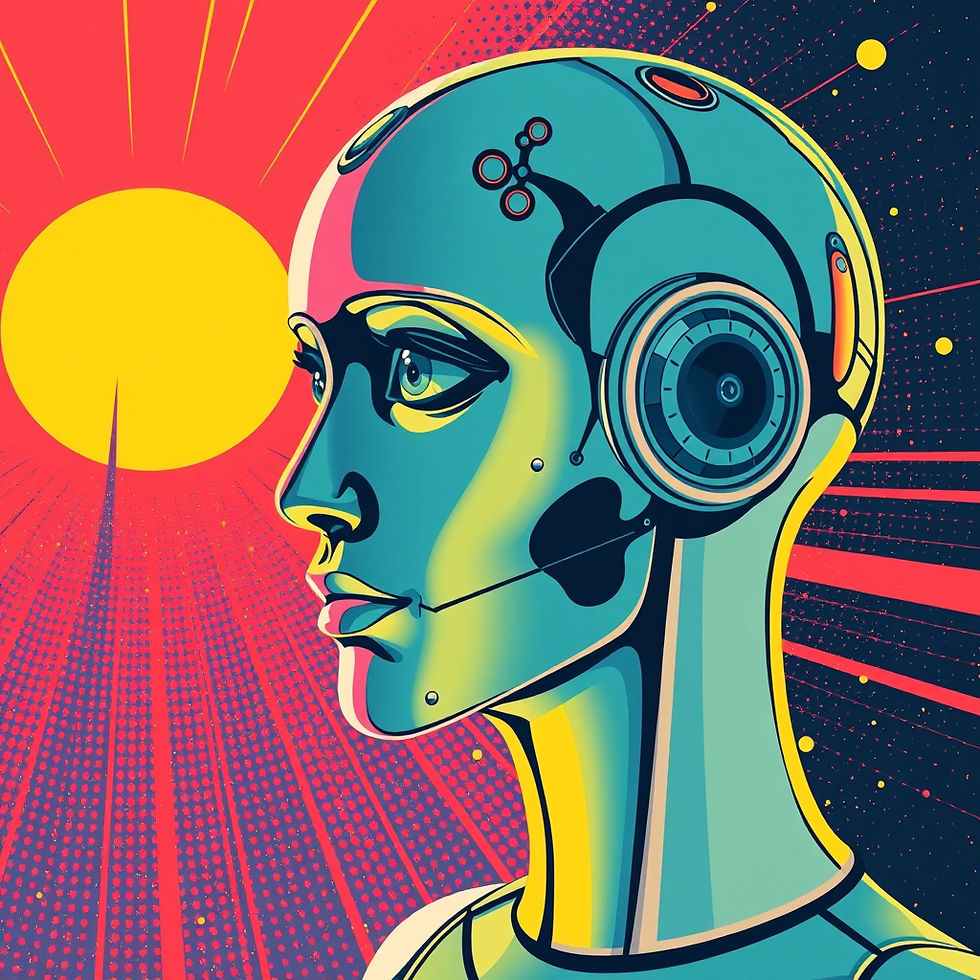DQN: The AI Breakthrough That Taught Machines to Play
- Kat Usop

- Jun 1
- 4 min read
Have you ever seen an AI play a video game like a pro, or a robot learn to move smoothly without anyone telling it exactly what to do? That's often thanks to a cool area of Artificial Intelligence called Reinforcement Learning (RL). And a big reason AIs got so good at these tasks, especially when dealing with things like game screens or camera views, is a clever trick called Deep Q-Networks (DQN).
The Old Way: Q-Learning's "Memory Problem"
Imagine you're trying to teach a dog some tricks. An older method, called Q-Learning, is like trying to write down every single possible situation the dog could be in (e.g., "sitting, facing left, tail wagging") and then, for each situation, writing down how good each possible action is ("sit," "stay," "bark"). You'd have a giant notebook, a "Q-table," with endless entries.
This works fine for very simple tasks, like teaching a dog to sit in one spot. But what if the "state" is a complex video game screen, like in an old Atari game? The number of different screens you could see is mind-bogglingly huge – more combinations than grains of sand on all the beaches in the world! Your "Q-table" notebook would be impossibly big, and you'd never finish writing it. This is what we call the "curse of too much information."
The New Way: Deep Q-Networks (DQN) – Learning to "Feel It Out"
DQN, first shown by the smart folks at DeepMind in 2013, found a brilliant solution by mixing Q-Learning with Deep Learning. Instead of that impossible Q-table, DQN uses a special kind of computer program called a neural network (think of it like a simplified, digital brain).
Here's the simple idea: The neural network takes what the AI "sees" (like the pixels on the game screen) as its input. Its job is to then "guess" how good each possible action is in that situation. So, instead of memorizing every single screen and every single best move, the neural network learns to recognize patterns and make smart estimates. It learns to "feel out" the best move, even for screens it's never seen before, much like you learn to play a new game by understanding its rules and how things move, not by memorizing every single possible moment.
Two Secret Weapons for Stability: Experience Replay and Target Network
Just using a neural network wasn't enough. Training it was like trying to learn to juggle while riding a unicycle on a tightrope – very wobbly! DQN added two key ideas to make it stable and learn effectively:
Experience Replay (The "Study Buddy" Method):
The Problem: If the AI only learns from its very latest actions, it's like only studying for a test by looking at the last page of your notes. The information is too similar, and it might quickly forget important lessons from earlier.
The Solution: DQN has a "memory bank" called a replay buffer. Every time the AI plays and learns something new (like "I was in this situation, I did this, I got this reward, and then I ended up here"), it stores that "experience" in the memory bank. Later, when it's time to learn, it randomly picks a bunch of old experiences from this memory bank, like shuffling a deck of cards.
Why it helps: Randomly picking experiences mixes things up, preventing the AI from getting stuck on recent, similar events. It's like reviewing all your notes, not just the last page, which makes learning more solid and efficient.
Target Network (The "Stable Goal" Method):
The Problem: When the AI is trying to learn, it's trying to hit a "target" Q-value (what it should be learning). But if the "target" itself is constantly changing because the AI's own "brain" is learning, it's like trying to hit a moving target while you yourself are also moving. Very hard to aim!
The Solution: DQN uses two identical "brains" (neural networks). One is the "main brain" that's actively learning and changing. The other is a "target brain" that stays frozen for a while. When the AI calculates what it should be learning (the "target"), it uses the stable, frozen "target brain." Only every once in a while (say, every few thousand steps), the "main brain's" latest knowledge is copied over to the "target brain."
Why it helps: This gives the "main brain" a steady, unchanging target to aim for, making the learning process much smoother and more reliable.
The Big Impact of DQN
DQN was a huge breakthrough in AI. It proved that deep learning could be used to teach AIs to play complex games directly from what they saw on screen, achieving results that were as good as, or even better than, human players. This opened the door for so much more research and even smarter AI programs.
Even though there are newer, fancier AI learning methods now, the core ideas of using a "memory bank" (experience replay) and a "stable goal brain" (target network) are still super important and used in many of today's advanced AI systems. DQN truly showed the world what AI could learn to do!
Want to Explore More?
DQN is just the start of the amazing world of Deep Reinforcement Learning. If this got you curious, you might want to look up things like "Double DQN," "Dueling DQN," or "PPO" – these are even more advanced ideas built on the foundations of DQN!



Comments